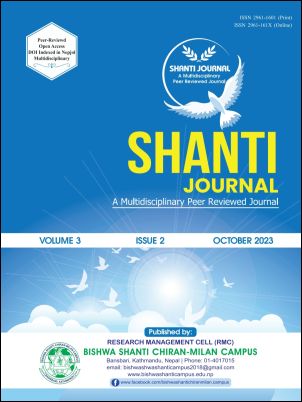Dynamic Relationship of the Stock Index with the Trading Volume of the Nepal Stock Exchange: An Empirical Analysis
DOI:
https://doi.org/10.3126/shantij.v3i1-2.60799Keywords:
Stock index, Trading volume, ARDL model, Granger causality.Abstract
Knowledge about the linkage between the volume and the index of the stock is crucial for market participants and investors to make informed decisions in trading and forecasting the stock market, as understanding this fundamental Linkage enhances investment decisions. This study relies on time series data to objectively explore the dynamic linkage between the index of the stock and the amount of trade on the Nepal Stock Exchange from mid December 2018 to mid-January 2023. The outcome of the Autoregressive Distributed Lag (ARDL) model reflects a long- and short-term substantial positive association between the volume of the trade and returns from the stock in the current timeframe. This implies that a change in volume has both a long- and short-term, small but positive effect on the returns from the stock. Conversely, the lagged-period stock index negatively and significantly impacts the present index of the stock. However, the conclusions drawn from the Granger causality test demonstrate no Granger causation from the volume of the trade to return and vice versa, implying that both variables do not affect each other.
Downloads
Downloads
Published
How to Cite
Issue
Section
License
Copyright (c) 2023 The Author(s)

This work is licensed under a Creative Commons Attribution-NonCommercial 4.0 International License.
This license enables reusers to distribute, remix, adapt, and build upon the material in any medium or format for noncommercial purposes only, and only so long as attribution is given to the creator.




